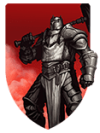Welcome to the world of Game HUD Design, where the convergence of functionality and visual finesse plays a pivotal role in enhancing players’ gaming experiences. The HUD, or Heads-Up Display, is a vital communication bridge between the virtual world and the player, providing essential information, feedback, and control elements in real time.
In this article, we will delve into the fundamentals of HUD design, exploring its core elements, various interface types, the significance of customization, and how to tailor it effectively for different gaming platforms. So, whether you’re a seasoned game developer seeking to perfect your HUD designs or an aspiring designer eager to create immersive user interfaces, join us on this journey to unravel the secrets behind a compelling and seamlessly integrated HUD experience.
What is Game HUD Design?
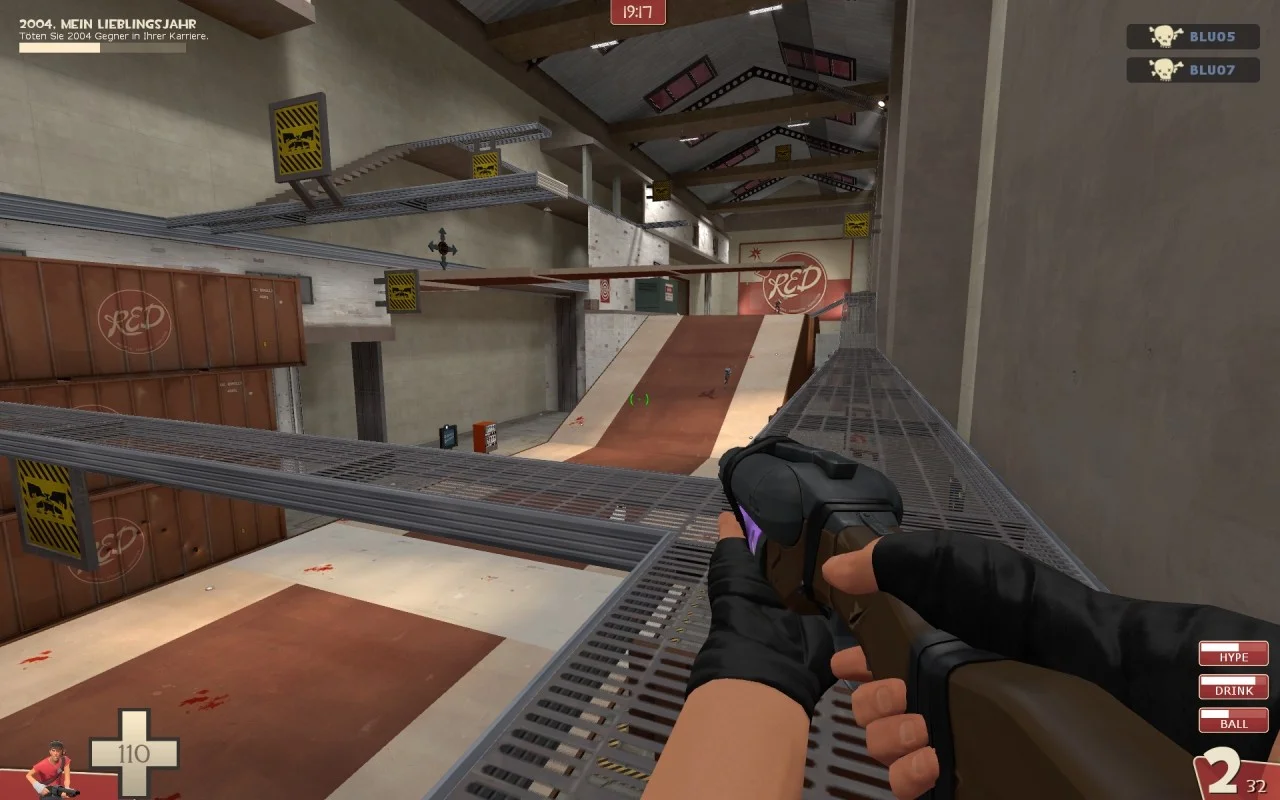
HUD, an acronym for Heads-Up Display, is a critical graphical overlay in video games that provides essential information, feedback, and interactive elements to players directly on the screen. It bridges the game’s virtual world and the player, delivering crucial details about the game state, character status, inventory, maps, health, ammunition, and much more in real time.
Game HUD design is planned carefully to ensure that players can access vital information at a glance, without the need for extensive navigation through menus or pausing the game. A well-crafted game HUD design not only enhances the overall gaming experience but also contributes to the immersion and engagement of players, helping them stay informed and in control throughout their gameplay journey.
What are the Elements of HUD in Games?
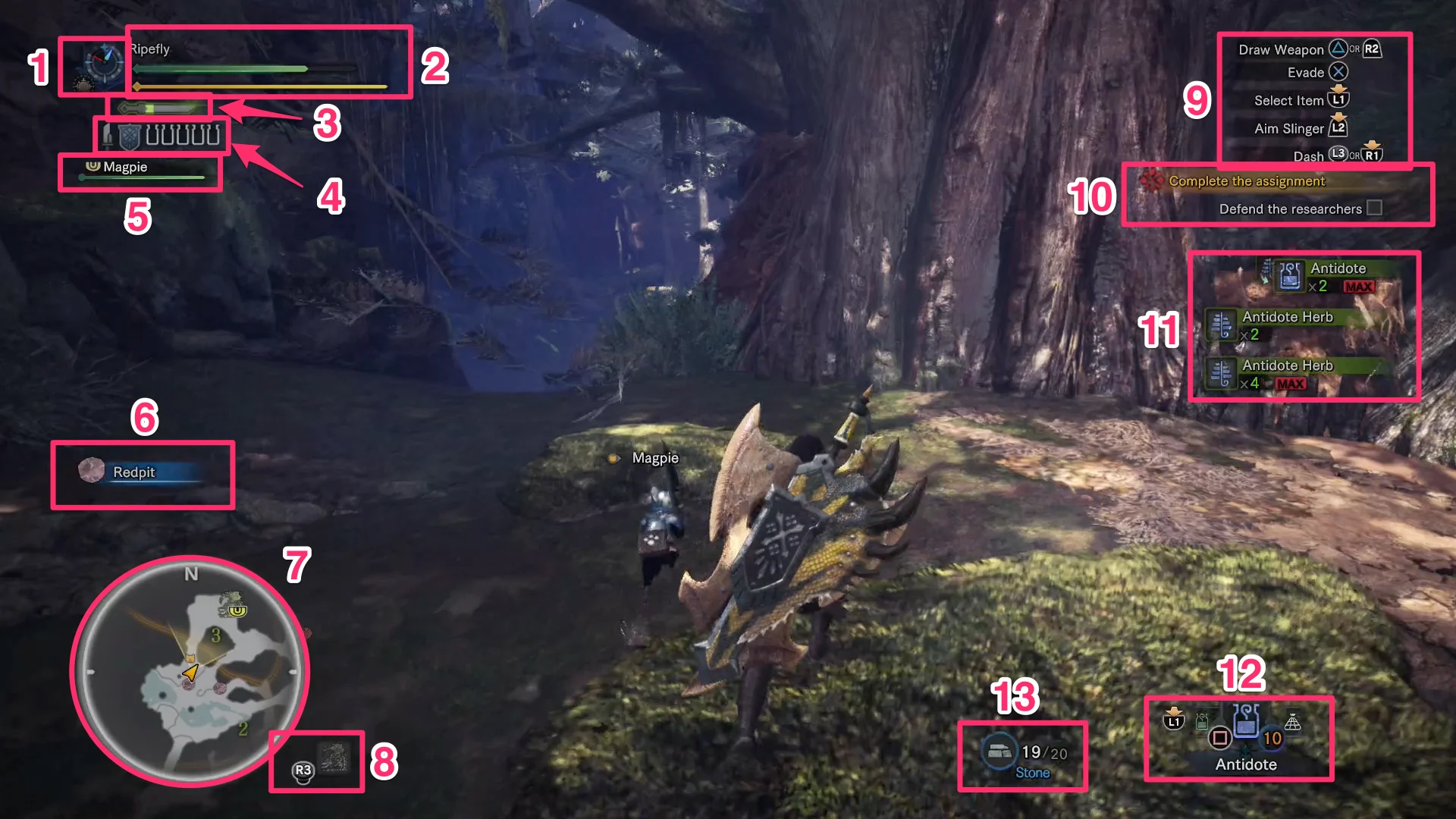
The elements of game HUD Design can vary depending on the genre, style, and complexity of the game, but some common elements can be found in many games:
- Health and Stamina Bars: These bars display the player character’s current health and stamina levels, indicating their remaining vitality and ability to perform actions.
- Ammo and Weapon Information: This shows the number of ammunition rounds available for the player’s equipped weapon and the selected weapon or item.
- Minimap and Map: The minimap provides an overview of the game world, while the full map allows players to navigate and plan their routes.
- Objective Tracker: This element keeps track of current objectives, quests, or missions, helping players focus on their goals.
- Score and Points: Displayed to track the player’s score, points, or achievements, providing a sense of accomplishment.
- Inventory and Equipment: Allow players to manage their items, gear, and equipment during the game.
- Compass: Provides directional indicators, helping players find their way around the game world.
- Timers and Countdowns: Displays time-related information, such as countdowns for time-limited events or progress timers.
- Dialogues and Character Interactions: Shows conversations and interactions with non-player characters.
- Currency: Indicates the player’s in-game currency or resources.
- Status Effects: Notifying players of any positive or negative effects affecting their character.
Effective HUD design ensures that these elements are presented in a clear and intuitive manner, allowing players to quickly gather information without distraction or confusion, ultimately contributing to a seamless and enjoyable gaming experience.
HUD Interface Types

HUD (Heads-Up Display) interface types can vary based on the game’s genre, complexity, and intended user experience. Here are some common HUD interface types found in games:
- Minimalist HUD: This type of game HUD design aims to keep the on-screen elements simple and unobtrusive. It typically displays only essential information, such as health, ammo, and a minimalistic minimap, providing players with an immersive experience.
- Full-Screen HUD: Some games utilize a full-screen HUD, where all relevant information and interface elements cover the entire screen. This can be useful in games with complex mechanics or strategic elements, as it ensures players have all the necessary details at their disposal.
- Contextual HUD: In a contextual HUD, elements are displayed dynamically, appearing only when needed and disappearing when irrelevant. This approach prevents screen clutter and maintains focus on the gameplay.
- Immersive HUD: This type of game HUD design is designed to blend seamlessly with the game world, enhancing immersion. Information is integrated into the game environment, such as showing objectives on in-game signs or displaying health on the character’s armor.
- Customizable HUD: Many games offer players the option to customize their HUD, allowing them to choose which elements to display, their positions, and transparency levels. This empowers players to tailor the interface to their preferences.
- Augmented Reality (AR) HUD: Emerging in AR and VR games, this type of HUD overlays digital information onto the player’s real-world environment, creating a more immersive and interactive experience.
- Dynamic HUD: In dynamic HUDs, the appearance and layout of elements change based on the game’s context. For example, the health bar might change color or size if a character takes damage.
- Retro HUD: Some games pay homage to older video games by using a retro-inspired HUD design with pixel art and nostalgic fonts, evoking a sense of nostalgia for players.
The choice of HUD interface type depends on the game’s aesthetics, game mechanics, and target audience. A good game HUD design enhances the player’s experience by providing essential information that is visually appealing and intuitive.
The Importance of HUD Customization
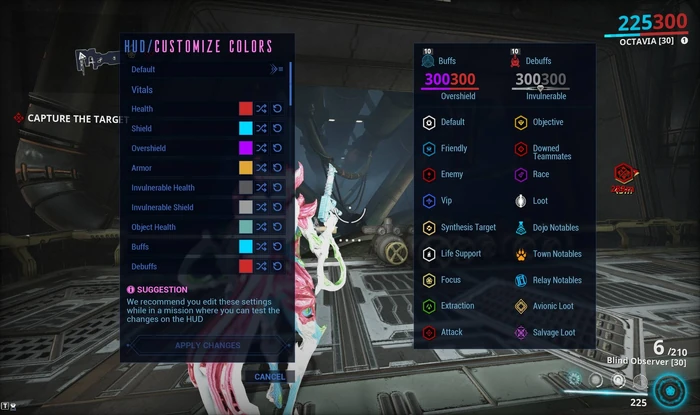
HUD customization plays a pivotal role in modern game design and game HUD design, allowing players to personalize their gaming experience according to their preferences and needs. The importance of HUD customization lies in its ability to enhance player immersion, accessibility, and overall satisfaction. By allowing players to adjust the on-screen interface to suit their individual playstyle, developers can create a more inclusive and enjoyable experience for a diverse audience.
Firstly, HUD customization empowers players to tailor the interface to their liking, which can significantly improve immersion. By choosing what information is displayed, its position, size, and transparency, players can create a HUD that seamlessly integrates with the game world, reducing distractions and enhancing the feeling of being fully immersed in the virtual environment.
Secondly, customization enhances accessibility for players with different needs and preferences. Some players may require larger text or icons for better visibility, while others might prefer a minimalistic HUD to minimize screen clutter. By accommodating these individual preferences, game developers can ensure their games are accessible and enjoyable to a broader audience.
Furthermore, HUD customization adds an element of control and personalization to the gaming experience. Players feel more connected to the game when they can make it their own. This sense of agency can increase player engagement and longer play sessions.
In summary, HUD customization is a vital aspect of modern game design. By allowing players to personalize their on-screen interface, developers can enhance immersion, accessibility, and overall player satisfaction. Customizable HUDs create a more inclusive and enjoyable experience, catering to individual preferences and playstyles and ultimately enriching the gaming journey for all players.
What is the Difference Between UI and HUD?
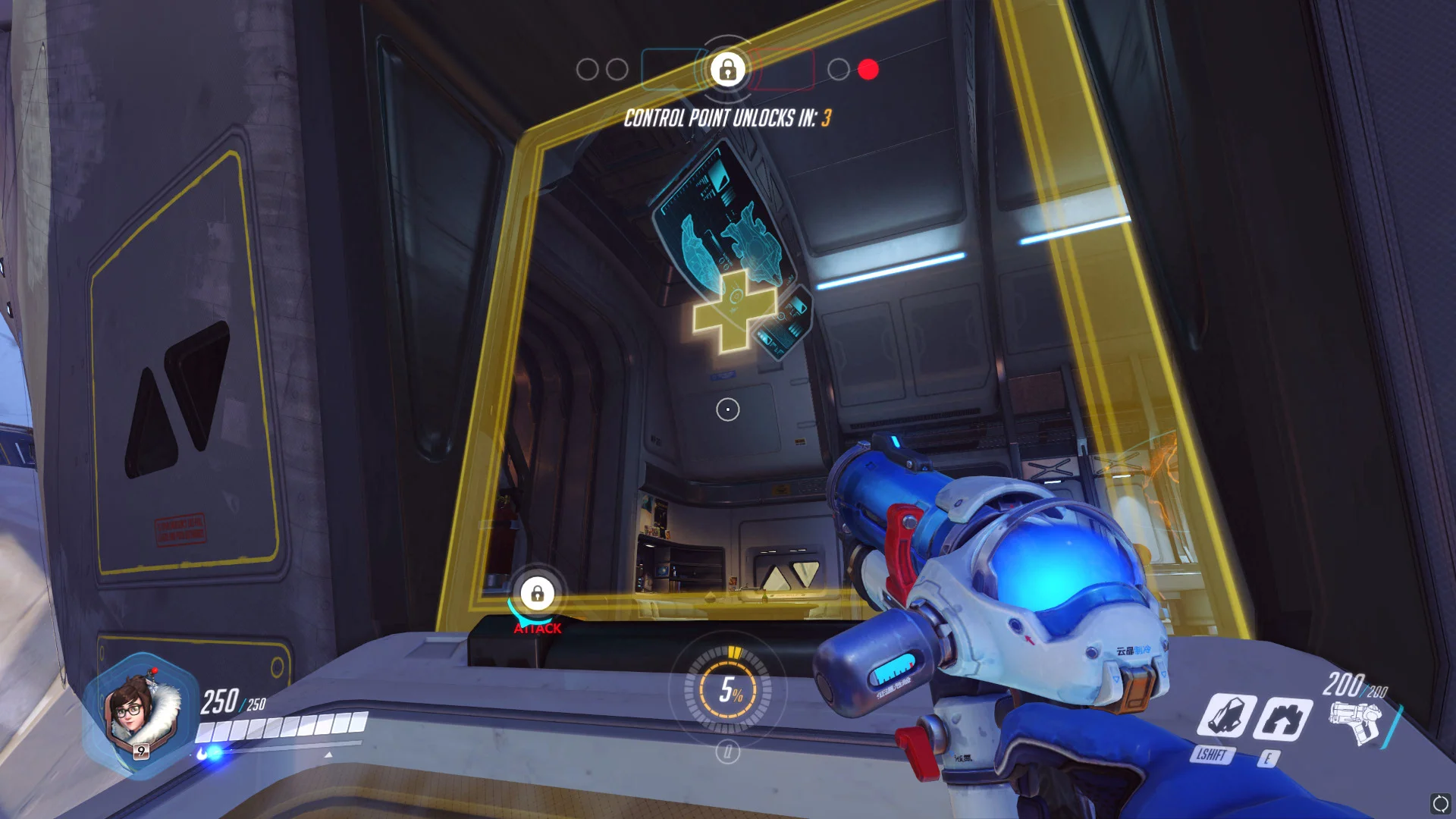
The key difference between UI (User Interface) and HUD (Heads-Up Display) lies in their scope and purpose within a video game.
User Interface (UI) refers to the entire set of on-screen elements that players interact with to navigate the game, access menus, manage inventory, and perform various in-game actions. The UI encompasses everything from the main menu, character inventories, health bars, maps, dialogue boxes, and more. It is a comprehensive system that facilitates communication between players and the game world, providing essential information and controls.
On the other hand, the Heads-Up Display (HUD) is a specific subset of the UI. It consists of real-time information and indicators superimposed on the gameplay screen without obstructing the player’s view. Common HUD elements include health and stamina bars, ammunition counters, minimaps, objective markers, and status notifications. The HUD is designed to provide crucial information to players during gameplay without requiring them to access separate menus or interfaces.
The UI encompasses all the game’s interactive elements, including menus, inventories, and in-game actions. At the same time, the HUD specifically refers to the real-time indicators and information displayed on the screen during gameplay. Both UI and HUD play essential roles in enhancing player experience and engagement, with the UI serving as the broader framework for player interaction and the HUD offering immediate and relevant feedback during gameplay.
Read Also: What is UI in Games?
How to Optimize the HUD for Different Platforms
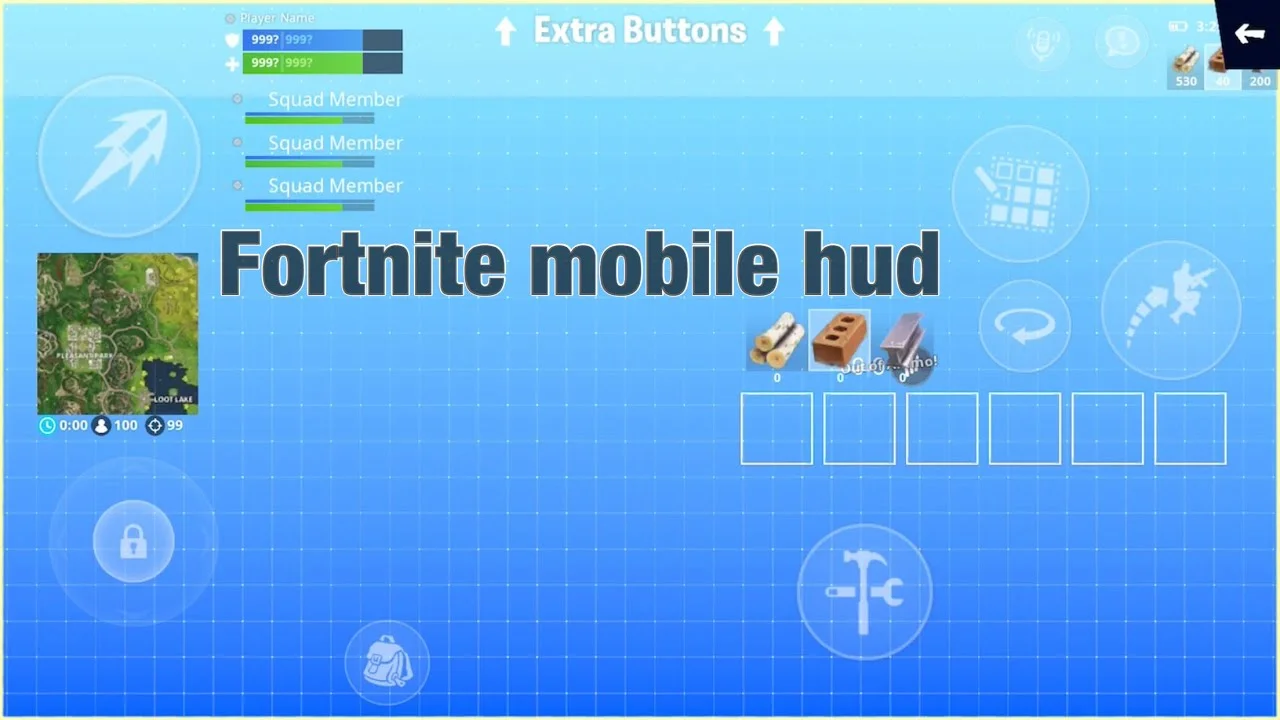
Optimizing the game’s HUD design for different platforms is crucial to ensure a seamless and enjoyable gaming experience for players across various devices. Here are some key considerations to achieve effective HUD optimization:
Screen Size and Aspect Ratio
Different platforms like smartphones, tablets, PCs, and consoles have varying screen sizes and aspect ratios. Design the HUD elements to adapt and scale properly on each platform to avoid cropping, stretching, or distortion.
Touchscreen Interaction
For mobile devices with touchscreen controls, ensure that HUD elements are large enough to be easily tapped and interacted with using fingers. Prioritize essential controls and minimize clutter to avoid accidental taps.
Controller Support
Consider using physical controllers when designing for consoles or PCs. Ensure the HUD elements work well with gamepad inputs and provide clear visual cues for button prompts.
Platform-Specific Features
Take advantage of platform-specific features, like motion controls or touch gestures on certain devices. Tailor the HUD to enhance gameplay using these unique functionalities.
Performance Optimization
Optimize HUD elements to have minimal impact on performance, especially on lower-end devices. Keep the number of graphical elements in check and use efficient code to ensure smooth performance.
Customization Options
Allow players to customize the HUD to their preferences. Provide options to adjust element positions, transparency, and sizes, enabling players to create a personalized gaming experience.
Contextual Display
Implement a dynamic HUD that adapts based on the gameplay situation. Display information relevant to the current scenario, avoiding clutter and unnecessary distractions.
Test and Iterate
Perform thorough testing on each platform to identify potential issues and make necessary adjustments. Gather feedback from players and iterate on the game’s HUD design to achieve the best possible user experience.
By carefully optimizing the HUD for different platforms, game developers can enhance the accessibility and playability of their games, catering to a diverse audience and ensuring a smooth gaming experience on various devices.
Rules of Game HUD Design
A game’s Heads-Up Display (HUD) is a critical element that conveys vital information to players while they engage with the game’s world. A well-designed HUD enhances the gaming experience by providing essential data without disrupting the player’s immersion. To achieve this balance, there are several fundamental rules of game HUD design that game developers and designers should follow:

1. Game HUD Design Should be Consistent with Theme and Style
A cohesive visual style and theme are vital for any game, and the HUD should reflect and enhance these aspects. The HUD’s aesthetics, including color schemes, fonts, and graphical elements, should harmonize with the game’s overall design. A medieval fantasy game, for example, might feature a HUD with ornate, medieval-inspired graphics, while a futuristic sci-fi game would opt for a sleek and futuristic HUD. Consistency in style ensures that the HUD feels like an integral part of the game world.
2. Strive for Maximum Clarity and Readability
The primary purpose of a game HUD is to communicate essential information clearly and quickly. To achieve this, designers must prioritize readability. This means using legible fonts, contrasting colors, and intuitive icons. The size and placement of HUD elements should be carefully considered to avoid clutter or obstructing the player’s view. Clarity and readability are especially crucial during fast-paced gameplay, where split-second decisions can determine success or failure.
3. Consider Smart Placement of HUD Elements
Strategic placement of HUD elements can significantly impact the player’s experience. Information that requires constant monitoring, like health, ammunition, or a minimap, should be located near the edges of the screen to minimize eye movement. Less critical information can be placed further from the center. This smart placement ensures that players can access essential data without taking their focus away from the game’s action.
4. Keep Your Game HUD Design on a “Need to Know” Basis
One of the challenges of game HUD design is balancing the amount of information displayed. While it’s essential to provide players with useful data, overloading the HUD with unnecessary information can overwhelm and confuse them. The principle of “need to know” should guide the inclusion of HUD elements. Display information that directly affects the player’s decisions and actions, such as health, ammunition, or objectives. Avoid cluttering the screen with superfluous data that doesn’t contribute to the gaming experience.
5. Make it Customizable Where You Can
Players have diverse preferences, and what works for one player may not suit another. Providing options for HUD customization can enhance the player experience. This might include allowing players to resize or reposition HUD elements, adjust transparency, or choose from different HUD layout presets. Customization empowers players to tailor the HUD to their liking, promoting a more personalized and enjoyable gaming experience.
Final words
In conclusion, HUD design shapes the player’s gaming experience by providing essential information and interactions during gameplay. The elements of a well-designed HUD should be intuitive, unobtrusive, and tailored to the specific needs of each game and platform. HUD customization gives players a more personalized experience, making them feel more engaged with the game.
Understanding the difference between UI and HUD is crucial for creating a cohesive and seamless user interface that enhances gameplay. Moreover, optimizing the HUD for different platforms ensures players enjoy the game on various devices without compromising functionality or visual appeal. As game developers continue to innovate and cater to diverse audiences, thoughtful and efficient HUD design will remain a key aspect in shaping the success of modern video games.
